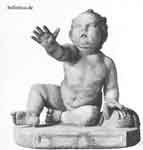.
Boethus, though he is better in silver, did a child strangling a goose by hugging it, Pliny the Elder Natural History

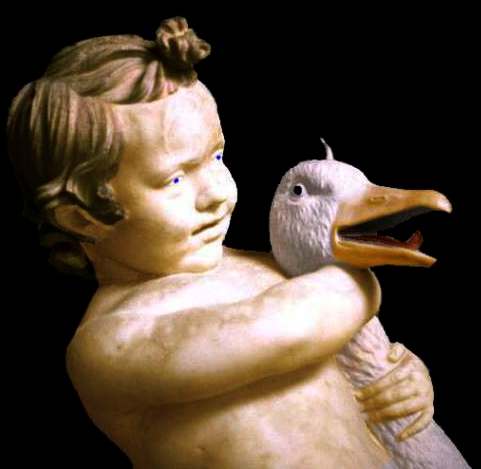
Hellenistic Art: Boy with a goose and my own possible color reconstruction
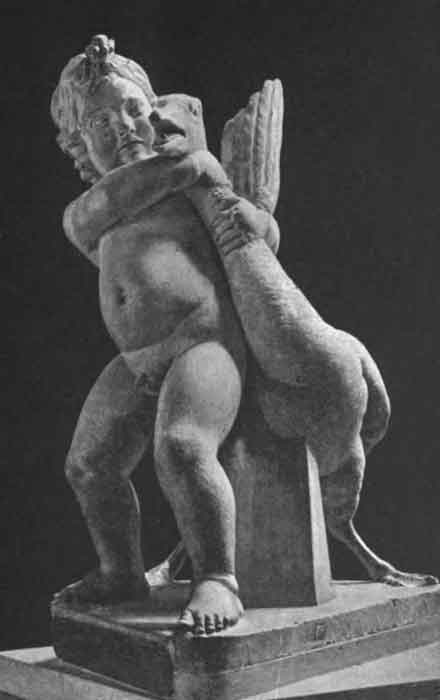

Child with Goose, Louvre Version
Another View

Child with Goose, Altemps Inv8565bis
A very young boy with a goose, one of many Roman copies of a Hellenistic bronze original (160 BC?) attributed to Boethus (or Boethos) of Chalcedon (mainly working in Rhodes). Found in Rome in 1789 and transferred to the palais Braschi, then sold 1812 to Munich and now there in the Glyptothek. Boethus was noted for his representations of children. The goose was the sacred bird of Aphrodite. It there any connection with this piece of Art? Copies in the Museo Capitolino, Munich, the Vatican Museum and the Louvre.
Is the boy struggling with a goose or strangling the goose? Does he has the power to strangle the goose? Maybe a gift to some god from parents of an ill child after a successful healing. Like today children of ancient Greeks liked to play with animals, even if sometimes the animals look not very happy the way how they are treated.
The boy with the goose is probably the young Antiochus V Eupator, the son of Antiochus IV Epiphanes. Boethus of Chalcedon produced a sculpture of Antiochus IV and probably he represented also his son with this sculpture. Probably the story which inspired this sculpture is that of Heracles as an infant killed snakes send by Hera.
Boethus was a bronze caster and silversmith. The only original signed work of Boethus is a bronze herm from a shipwreck off the coast of Tunisia, Mahdia. Pausanias and Pliny the Elder mention Boethus in their books.
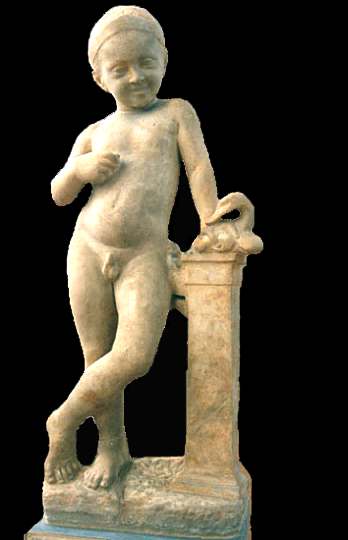
a boy with a duck, National Museum of Athens, 3rd century BC. Some offer to a god because the boy had some illness? I like the natural way the boy is represented, proud and happy.

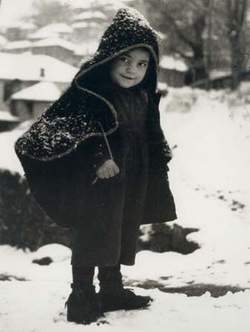
and a even younger child with a dog, National Museum of Athens. Compare with this image of a Greek boy taken 2300 years later by the photographer Dimitris Tloupas (1920 – 2003). The image is from this webpage “The Little Refugee” (Ο μικρός πρόσφυγας) was found in 1922 in Gerontiko in Nyssa (Asia Minor) by the archaeologist Konstantinos Kourouniotis and was brought to the National Museum in Athens in the first days of the destruction of Smyrna, August 1922. It dates from first century BC but was probably a copy from an earlier work from third century B.C. The total height of the statue is 0,69m.
Excerpt from The Statue that was Cold by Christos Boulotis (WORD File) http://www.patakis.gr/english/display.php3?isbn=2883
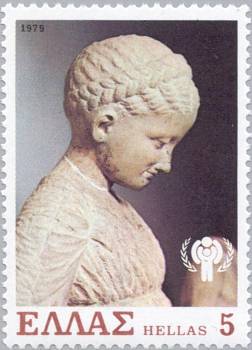
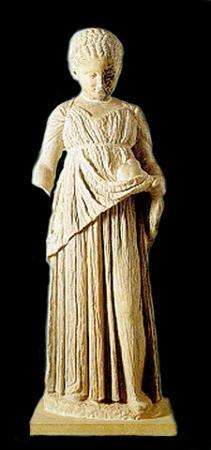
At seven years of age, I carried the sacred vessels; at ten, I pounded barley for the altar of Athene; next, clad in a robe of yellow silk, I played the bear to Artemis at the Brauronia; Aristophanes, Lysistrata
and a sculpture of a young girl (right image from the ministry of Greek culture, From the archaelogocal Museum of Brauron, Statue of an "arktos" which means a bear (plural = arktoi or bears) and describes a young girl, votive offering to Artemis at Brauron. The young girl is represented clad in a chiton and himation, holding a rabbit in her right hand. Dated to the 4th century BC. ) Arkteia or Bear Festival at Brauron . .girls celebrated the Arkteia or "Bear Festival," a quadrennial mystery ritual in honor of Artemis, goddess of wild animals and maidens. Legend says that this was a prenuptial festival required of all girls of Attica. A series of vases found at the Arkteia sanctuaries depicts girls, both nude and in short chitons, apparently performing various ritual activities, including dancing and running. The scenes of running appear to show girls chasing one another in a contest symbolic of their change of status from "wild" to "tame." http://www.archaeology.org/online/features/olympics/girls.html , votive offering to Artemis at Brauron, statue of a young arktos with a rabbit (sacred to Aphrodite)
| Ancient Greece
Science, Technology , Medicine , Warfare, , Biographies , Life , Cities/Places/Maps , Arts , Literature , Philosophy ,Olympics, Mythology , History , Images Medieval Greece / Byzantine Empire Science, Technology, Arts, , Warfare , Literature, Biographies, Icons, History Modern Greece Cities, Islands, Regions, Fauna/Flora ,Biographies , History , Warfare, Science/Technology, Literature, Music , Arts , Film/Actors , Sport , Fashion --- |


